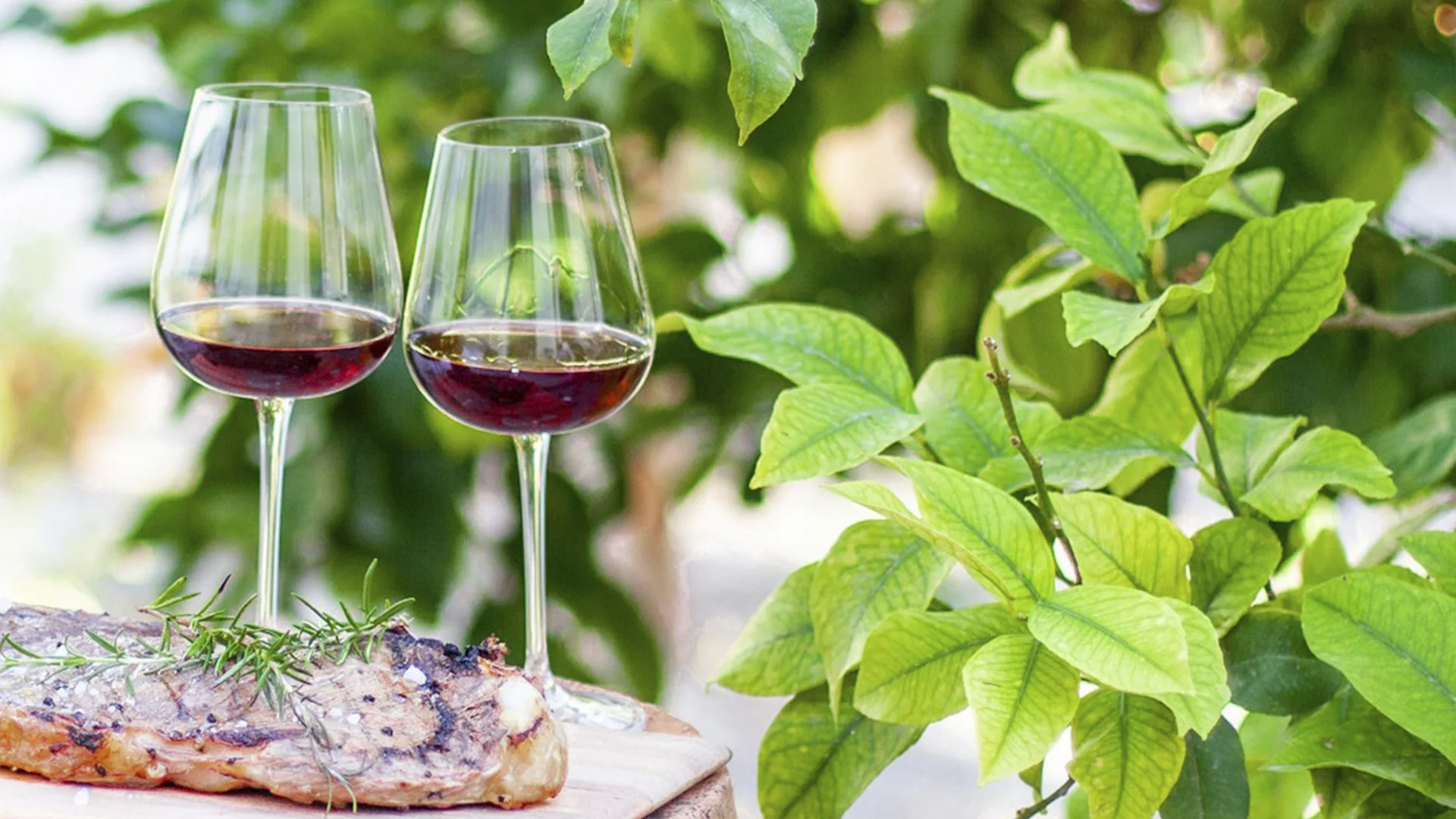
Bold, versatile, and criminally underappreciated, Furmint is Hungary’s white grape powerhouse.
From razor-sharp dry wines to the legendary Tokaji Aszú, it delivers a range of elegance and surprise in every sip.
In this guide, we’ll explore its history, winemaking, styles, regions, flavour profile, food pairings, and why it deserves a spot in your cellar—and your heart.
Furmint is one of Hungary’s most important wine grapes, producing a wide spectrum of Furmint wines that reflect the country’s deep winemaking heritage. As a flagship of Hungarian wines, it stands out among the noble grape varieties cultivated in Central Europe. Its home base is the Tokaj region, where the grape variety has enjoyed a long history stretching back to the Middle Ages. Furmint is a white Hungarian wine grape variety that is most widely grown in the Tokaj-Hegyalja wine region. Interestingly, Furmint is genetically related to several other grape varieties, including Riesling and Chardonnay, due to its parentage from Gouais blanc.
In historical records, the name Furmint is associated with the legendary sweet wines of Tokaj, but today it’s equally respected for its world-class dry styles. With its naturally high acidity, transparent character, and ability to express terroir, Furmint remains a signature of Hungarian craftsmanship and a compelling choice for adventurous wine lovers. Furmint is characterized by its naturally high levels of acidity and complex flavors derived from phenolic compounds in the juice.
Furmint has been rooted in Hungary’s Tokaj region for centuries, with written records dating back to the 17th century. The first documented mention of Furmint dates back to 1611, and the grape likely has deep historical roots in Hungary.
By the 18th century, it had become the backbone of Tokaji Aszú, a wine highly valued and traded across Europe, prized in royal courts. Louis XIV famously called it the “Wine of Kings, King of Wines.”
Following a decline during the phylloxera epidemic and decades of state-controlled production under communism, the 1990s ushered in private investment and a quality renaissance.
Today, Furmint stands as both a symbol of Hungarian heritage and a driver of innovation, bridging historic sweet wines with the rise of world-class dry styles.
Crafting Furmint wines begins with selecting only healthy grapes from carefully tended vineyards, often rooted in volcanic soil that imparts a distinctive mineral edge. The production of dry styles typically involves cool fermentation to preserve freshness, while some wineries experiment with oak aging to add spice and texture. Furmint is also frequently blended with other varieties such as Hárslevelű or Sárga Muskotály, especially in the creation of Tokaji Aszú, where it forms the structural backbone. Furmint is a late-ripening grape variety that buds early in the growing season, making it susceptible to springtime frosts. The Furmint grape has shown a high degree of genetic diversity, with numerous clones found within the Tokaj region.
Whether in pure form or alongside other varieties, the grape’s high acidity and adaptability allow winemakers to explore a wide stylistic range, from bone-dry and zesty to rich, lusciously sweet expressions.
Yes. Furmint is increasingly celebrated as a dry wine, with dry versions and dry styles now accounting for a significant share of production. These wines are known for their vibrant acidity, layered citrus and orchard fruit notes, and a clean, mineral-driven finish. Dry Furmint is described as crisp, refreshing, and aromatic, often featuring aroma notes of smoke, pears, and lime. Many examples are strikingly refreshing, offering a zesty lift that makes them ideal for pairing with a wide range of foods, from delicate seafood to more robust fare. This modern focus on dry expressions has helped redefine Furmint’s image beyond its sweet Tokaji heritage, showcasing the grape's remarkable versatility.
The most famous expressions of Tokaj are indeed sweet, with full-bodied Furmint wines forming the core of legendary Tokaji Aszú. These wines burst with flavours of honey, apricot, and candied citrus, often accented by notes of grapefruit that add brightness. The grape can be made into both dry and sweet wines, with sweet wines typically harvested later when affected by Botrytis.
Their complex flavours come from the meticulous harvest of botrytized grapes and the long, patient aging process. While sweet Tokaji remains an icon, it’s essential to remember that not all wines from the region share this profile: modern dry and off-dry styles offer a completely different, yet equally compelling, side of the grape. The Tokaj Region has a microclimate that is ideal for the development of noble rot (Botrytis).
In its dry form, Furmint often delivers a zesty flavour range, from crisp green apple and lemon to ripe pear and quince, all backed by a distinct mineral edge. The grape’s high acidity and layered fruit make it an excellent partner for spicy foods, where its freshness balances heat and intensity.
In sweeter styles, such as Tokaji Aszú, Furmint evolves into a wine of remarkable depth, with honey, apricot, and exotic spice notes unfolding in waves. Across styles, the balance of fruit, acidity, and structure creates wines that are both vivid in youth and capable of graceful aging.
Quick matrix for tasters who think in dials rather than poetry:
Dry Furmint is a chef’s friend because acid and minerality make food taste brighter. Try with oysters, tempura, grilled river fish, roast chicken with tarragon, or vegetable risotto. A touch of residual sugar can calm the heat of chillies, so Thai curries, Sichuan stir-fries, and Korean BBQ pair surprisingly well. Furmint goes well with creamy pasta dishes, enhancing the richness of the meal. Pairing Furmint with charcuterie boards offers a delightful contrast of flavours.
Sweet Tokaji loves contrast and echo. Foie gras finds lift and cut, blue cheese gains balance, and fruit tarts mirror notes of apricot and honey. Dark chocolate works when cocoa bitterness counters sweetness, especially with orange or nut accents.
At-a-glance meal pairing guide:
Tokaj is situated in northeastern Hungary, bordered by the natural boundaries of the Bodrog and Tisza rivers, as well as the Zemplén hills.
Furmint’s heartland is the Tokaj wine region, where the confluence of rivers and volcanic hillsides creates ideal conditions for both sweet and dry expressions. Within this area, the Tokaj Hegyalja region is particularly renowned for its unique microclimates and soils, which enable the grape to develop exceptional character.
While Furmint dominates plantings, growers also cultivate other grapes such as Hárslevelű and Sárga Muskotály, which are often used in blends. Beyond Tokaj, volcanic sites like Somló and lake-influenced areas near Balaton offer unique interpretations, showing how site and climate diversity keep Furmint vibrant and expressive. In addition to Furmint, the Tokaj region's official grape varieties include Hárslevelű, Sárga Muskotály, Kövérszölö, Zéta, and Kabar.
Furmint wines are best served at the right temperature: dry styles at 10–12°C in a white wine glass, and sweet Tokaji at 8–10°C in smaller dessert glasses. Some of the finest bottles are made to improve with time, and Furmint age can reveal honeyed, nutty nuances alongside the grape’s signature acidity.
Whether freshly bottled or matured for years, allowing the wine to rest in proper cellaring conditions — cool, dark, and vibration-free — will ensure it develops harmoniously. Once opened, dry versions can be stored in the fridge for 2–3 days, while sweet Aszú can remain fresh for a week or more.
Furmint, Riesling, and Dry Sherry intersect on acidity, aroma, and structure, but each plays a different tune.
Takeaway: Furmint shares Riesling’s range from bone-dry to nectar-sweet, while certain Szamorodni echoes Sherry’s savoury register without fortification. Think Riesling’s laser, Sherry’s bass, and Furmint’s ability to solo and accompany with equal confidence.
Tokaj is embracing resilience through site selection, gentler farming practices, and community-driven economics. Growers adopt organic programs, cover crops, and reduced use of sprays to build soil life and enhance canopy health. Two-way learning between small estates and larger houses accelerates the adoption of best practices, while lighter bottles and local supply chains reduce carbon emissions. Tokaj developed one of the world's earliest vineyard classification systems in 1700.
Climate strategy centers on shade, water retention, and earlier picks to preserve acids. Historic cellars carved into volcanic rock offer naturally cool, low-energy aging, reducing footprint while amplifying house style. Tourism, education, and guild auctions help keep growers viable, allowing old vines to stay in the ground and heritage to remain alive.
Philosophically, the region treats sustainability as a compact between land, people, and wine quality: protect vineyard vitality today to secure Furmint’s voice tomorrow. That mindset helps Tokaj safeguard dry innovation and sweet tradition simultaneously.
Furmint is the underdog aristocrat: a heritage grape with modern swagger that delivers electrifying dry wines and sumptuous sweet icons. For casual drinkers, it’s fresh, food-savvy, and affordable; for connoisseurs, it’s age-worthy, terroir-driven, and distinctive. If you love Chablis, Riesling, or Sauternes, you owe your palate a tour through Furmint’s spectrum.
Practical next step: buy one dry and one Aszú, serve them side by side, and taste how acidity, texture, and sweetness reframe the same grape. That contrast is your aha moment—and the reason Furmint belongs on your table, your list, and your cellar.
Furmint is more than a wine. It serves as a cultural ambassador for Hungary’s resilience and creativity. In every glass, you taste centuries of craft, volcanic soils, and a community determined to make its mark on the modern wine world. Drink it not just for pleasure, but as a reminder that some of the greatest discoveries aren’t new at all—they’ve simply been waiting for you to notice.
























































.webp)

.webp)
.webp)
.webp)


























.webp)













Are you interested in
collaborating with us?